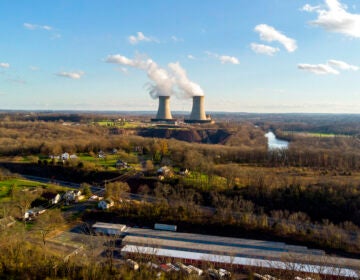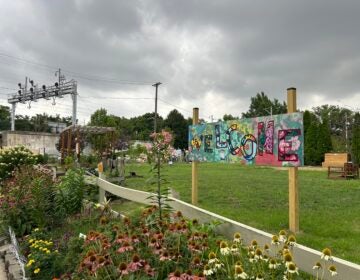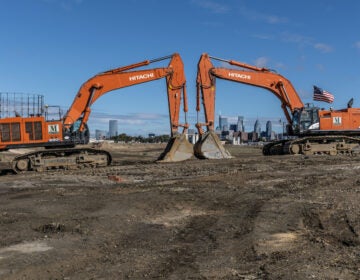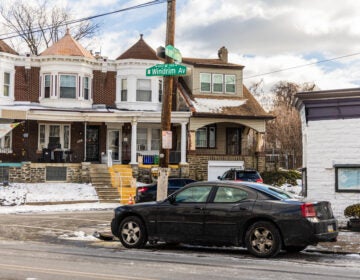Philly is creating its own environmental justice mapping tool with input from residents
At the first in a series of workshops, Philadelphians raised concerns about illegal dumping, poorly maintained trees and air pollution.

File photo: This photo shows the skyline in Philadelphia along the Schuylkill River, Thursday, May 16, 2019. (AP Photo/Matt Rourke)
This story is part of the WHYY News Climate Desk, bringing you news and solutions for our changing region.
From the Poconos to the Jersey Shore to the mouth of the Delaware Bay, what do you want to know about climate change? What would you like us to cover? Get in touch.
Over a dozen people gathered at a recreation center in the East Mount Airy neighborhood Monday evening to talk about environmental issues plaguing the area.
They described trees planted in the wrong places and not well-maintained by the city, poor air quality, illegal dumping and flooding.
“We’re talking about improving the community,” said Stephen Jones, a technology support professional and lifelong resident of the neighborhood who participated in the event. “The best input is going to come from the people that actually live [here].”
The event was the first in a series of workshops led by the city’s Office of Sustainability that will result in Philly’s own environmental justice mapping tool. Officials hope the finished map will identify communities in Philly that are disproportionately burdened by environmental hazards, such as air pollution, and lack environmental amenities, such as green space, in order to inform decisions.
“This tool will be Philadelphia-specific,” said Akilah Chatman, community science specialist at Drexel’s Academy of Natural Sciences, which is helping run the project. “This event today is to figure out how this map can be useful for community members.”
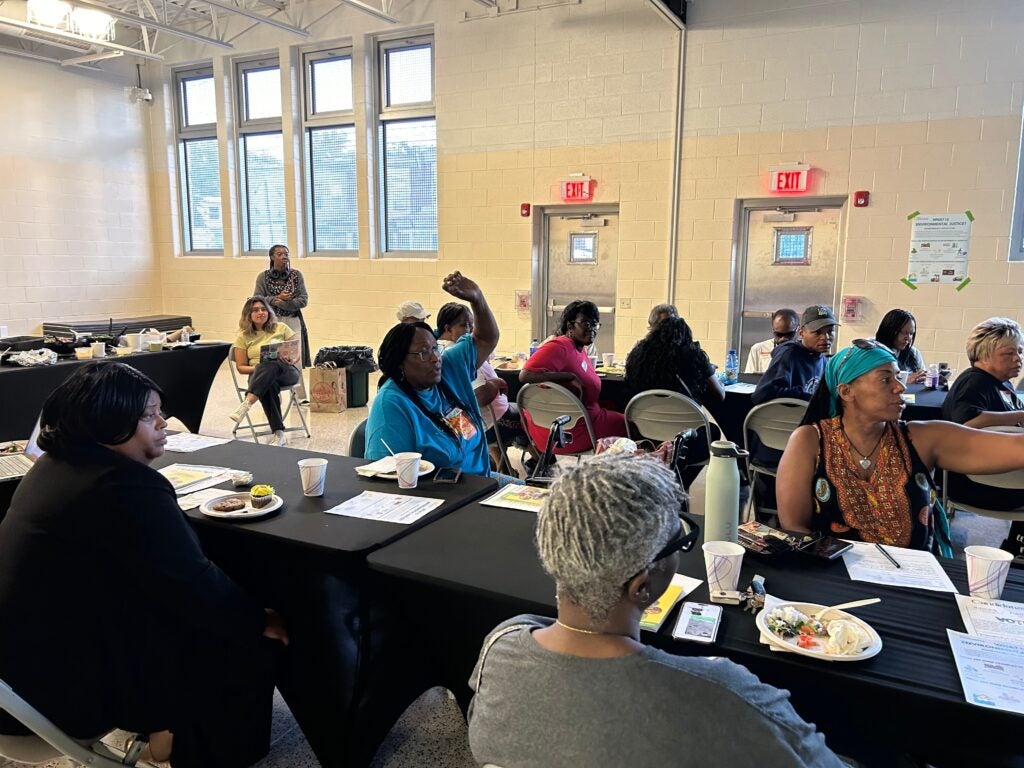
Other mapping tools, like the state’s PennEnviroScreen, identify environmental justice communities using metrics such as race, income, levels of diesel particulate pollution and asthma or cancer rates. The EPA’s tool, EJScreen, allows users to look at a range of environmental and socioeconomic indicators for a location.
“There’s nothing that’s specific to Philadelphia and gets into the nuance between neighborhoods, between blocks,” said Alexa Bosse, a leader of the design and planning firm Hinge Collective, which is also collaborating on the project.
While Monday’s event focused on the 19138 and 19144 ZIP codes in Germantown and West Oak Lane, participants also hailed from areas including North Philly and Overbrook.
Attendees raised a range of concerns, including pests and wildlife in places they shouldn’t be; food deserts; lawn care practices that hurt pollinators; air and water pollution; pollen and allergies; a shortage of trees; poorly maintained trees that damage pipes, homes and sidewalks; a lack of convenient recycling and disposal options; and slow city response times when residents report illegal dumping.
“It seems like it’s the same things, the same location people are illegally dumping,” said Rev. Chester Williams, president of the Chew & Belfield Neighbors Club, a registered community organization that co-hosted Monday’s event. “We’re hoping the city will step up that patrol.”
How exactly the map is used will be determined through the community engagement process, Chatman said. For example, it could be a useful tool for community groups looking to fight proposed facilities that would bring more pollution to their neighborhoods, or for the city when it decides where to focus investments in greening.
“As a city, it’s really important that we make better decisions,” Genevieve LaMarr LeMee, deputy director for environmental justice in the Office of Sustainability, told participants of Monday’s workshop. “This tool can inform our decision making and policy … help us prioritize staff, dollars, things like that.”
Several other mapping workshops will be held throughout the month of September, including in the Grays Ferry/Point Breeze areas, the Mantua/Cobbs Creek areas, the Kensington/Port Richmond areas, the Nicetown-Tioga area and Southwest Philly.

Subscribe to PlanPhilly
WHYY is your source for fact-based, in-depth journalism and information. As a nonprofit organization, we rely on financial support from readers like you. Please give today.




